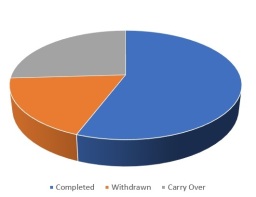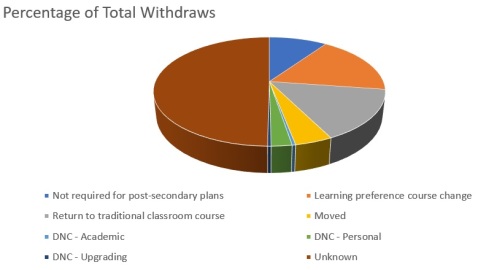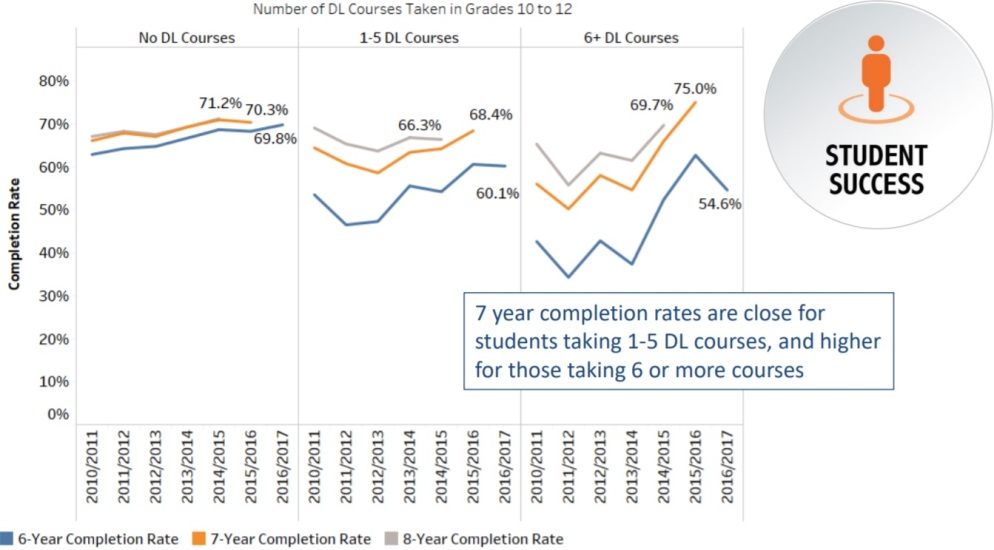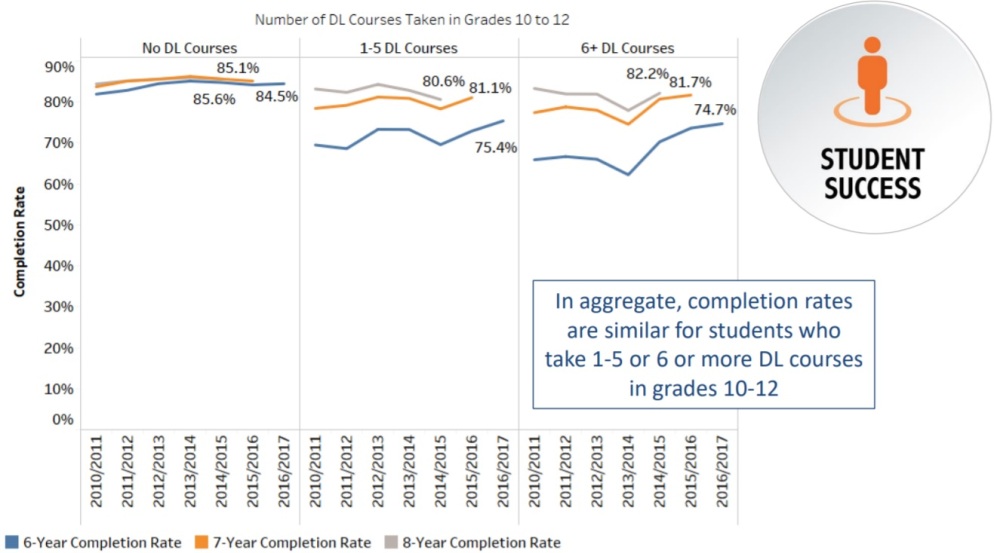While large scale data provides circumstantial evidence of student achievement, we endeavor to collect specific data sets that we are able to triangulate for the purposes of determining the success of our students. Specifically, our data dashboard for 2019/2020 will include information to help us answer these questions:
Big Idea #1 – Applying neuroscience to distributive learning design can help increase engagement, community, and connection.
- Why does distributive learning appeal to students?
- How does distributive learning enhance student engagement, community, and connection?
- What is are ideal models of distributive learning using brain-based research?
Our data dashboard will include:
STEP 1 (KNOW)
- The number of students who successfully register and complete substantive assignments
- Identifying the types of courses students enroll
- The reasons why students select particular online courses
STEP 2 (DO)
- The number of students who successfully complete courses
- A Comparison/Contrast of popular course offerings to identify possible factors that lead to engagement, community, and connections (i.e.: features that foster the move from executive functioning to creative development and opportunities for collaboration)
- A Comparison/Contrast of popular course offerings that support neuro-plasticity research
STEP 3 (UNDERSTAND)
- Identifying online courses that best support student self-assessment
- Surveying students to determine how distributive learning best supports their understanding of self-motivation, working habits and what they need to be successful 21st century learners
Big Idea #2 – Digital portfolios (Student Action/Learning Plans) are designed to foster student agency and resiliency.
- Why is it essential for students to develop and maintain an action plan/learning plan?
- How do we build educator capacity and competency in the support of students developing their digital personal action plan (MAP)?
- How do we ensure students engage in a process of self-reflection that results in the development of a meaningful action plan?
- How will a student’s personalized digital action/learning plan help with equity, diversity, and resiliency.
- How will students react to developing a personalized learning plan?
- What does a personalized action plan look like?
Our data dashboard will include:
STEP 1 (KNOW)
- The number of students enrolled in the DC 11 course on, or before, first reporting period
STEP 2 (DO)
- The number of students who have completed the substantive assignment on, or before, first reporting period
- Anecdotal feedback from students and teachers regarding the onboarding and development of student portfolios including identifying barriers that prevent students from accessing and developing their digital portfolio
- Identifying specific digital literacy skills needed to successfully access and develop a digital portfolio
- The number of students who used guiding questions as part of the self-reflection process
STEP 3 (UNDERSTAND)
- The number of student sharing their portfolios with their DC 11 teachers (5 times/year or 1 check-in per reporting period)
- The number of Grade 12 students using their digital portfolio as their Capstone
- Anecdotal responses from students on how they use/plan to use their digital portfolio
- Anecdotal responses from students on developing a digital portfolio
Enrollment Data

2020 Grad vs. Non-Graduate

Sea to Sky Online Completion Data


Provincial Completion Data




Digital Portfolios
Based on the core competencies that inform our Medicine Wheel, every student will create a digital portfolio to author their own learning plan, to self-reflect on core competency development, and to showcase their learning over time. Self-assessment of the ‘Learn’ core competency will be through the ‘Four Blankets’, an Indigenous representation of the layers of support that build student resilience. With a sense of self at the center, the second blanket of family, the third blanket of community, and finally the fourth blanket of land, culture, and a broader perspective wrapping around them, students will reflect on the connections, supports and relationships that build their resiliency and sense of purpose in the world.
Sharing and reflecting on their strengths, stretches, interests, and ‘next steps’ helps students build their sense of self-efficacy: the belief that they are capable learners who can grow and succeed.
Through student curation of a variety of artifacts, such as text, images, audio recordings, and video, chosen from learning experiences both inside and outside of school, student learning and growth will be documented over time. In the Sea to Sky School District, a student’s digital portfolio is known as the MAP (My Action Plan).

Evidence may include description, videos, artwork, images, writings, and audio. Students can include things from school, home, and their community. Anything that shows who and how they are as a learner.
Self-reflection is when students think about their feelings and actions. Reflecting on experiences in, and out of, school are a big part of making actions. Students will be provided with some guiding questions to help in this self-reflections part of their MAP.